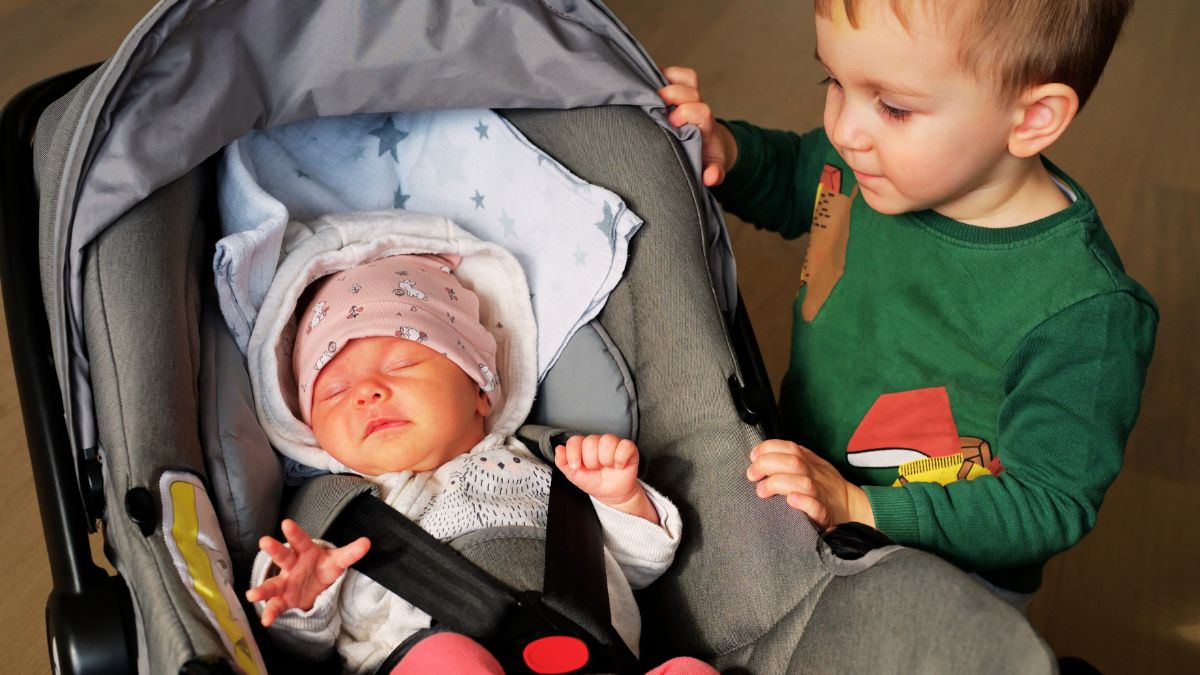This time of year, some children experience uneasy feelings related to starting a new school year. While some level of anxiety is normal, excessive or persistent anxiety can become problematic and interfere with a child’s daily life and development. Children lack the vocabulary to express thoughts and feelings like adults. Consequently, back-to-school anxiety often manifests …
Recent Posts
Categories
Estimated reading time: 8 minutes
As kids grow up and navigate their rapidly changing environment, they can experience anxiety which is a natural but complex emotional response. This time of year, especially, it is not uncommon for children to feel uneasy about the new school year. It occurs in young children headed to kindergarten, and even young adults enrolled in post-secondary education. While some levels of anxiety are normal and even helpful, excessive or persistent anxiety can become problematic and interfere with their daily life and development. Children and teenagers often lack the vocabulary to express thoughts and feelings like adults. Consequently, back-to-school anxiety can manifest itself in non-verbal ways requiring parents to pay attention to both their behaviour and words to figure out what their child might be going through.
What is Anxiety?
In evolutionary terms, anxiety is a survival mechanism used by mammals to react to or escape from imminent danger. The sympathetic nervous system triggers the flight-or-fight response, preparing the body for intense physical activity. It is a natural alarm system that allows us to size up potential threats so we can either run from them or react to them. Anxiety directs us during emergencies like the sound of a smoke detector during a fire. It helps us to survive. Everyone experiences it and for the most part, it is a helpful response. However, anxiety is unhealthy when sustained over long periods to a point where it paralyzes a person’s ability to function normally.
Types of Childhood Anxiety
Childhood anxiety is neither a character flaw nor a sign of weakness. It often stems from genetic, environmental, and developmental factors. Several types of anxiety disorders can affect children. These include generalized anxiety disorder (GAD), separation anxiety disorder, social anxiety disorder, specific phobias, panic disorder, and obsessive-compulsive disorder (OCD). Anxiety in children can evolve as they grow and mature. Separation anxiety is more common in younger children, while social anxiety might become more pronounced during adolescence.
Back-to-school anxiety generally manifests near the end of the summer. The symptoms present differently in each individual including restlessness, heightened sensitivity, irritability, and difficulty concentrating. Others may complain about stomach aches, muscle tension, sleep disturbances, and avoidance behaviours. If your child is withdrawn and lacks enthusiasm about back-to-school shopping there could be something emotionally amiss.
Parenting a Child with Back-to-school Anxiety
Parents caregivers, and educators must recognize the unique needs of each child. Open communication, validating their feelings, and offering guidance without judgement, allow them to instill trust and security in anxious kids. Early intervention and access to therapy and counselling, can significantly help an individual cope with anxiety and adjust to new routines. Empowering them with good communication skills and equipping them with healthy coping mechanisms can set them up to effectively manage and overcome their back-to-school anxiety. Here are a few strategies that might help:
1. Validate Emotions
First, create an environment where you can foster dialogue with your child about their feelings. If they need reassurance, then respond to that need truthfully. For example, do not say “You are a fantastic soccer player and will make the team!” You do not have control over that outcome and offering them solid guarantees can make disappointments harder to manage. In the long run, this causes them to doubt themselves and depend on constant affirmation from others.
Instead, you can build their resiliency to accept losses gracefully. An appropriate response would be, “I am glad you told me how you feel. This means a lot to you, and it is normal to worry. I am so proud of you because trying out takes courage.” Empathizing with stories of failures and successes from your childhood can help you build an emotional connection. Sometimes, kids are not looking for solutions. Some only want their feelings validated. Helping them express their doubts and fears can give them the stability and reassurance they need.
2. Introduce Predictable Routines
If young children had flexibility with bedtime over the summer break, prepare for back-to-school routines by transitioning them to predictable sleeping and waking hours. It sometimes takes them a week or two to adjust, therefore parents will benefit from starting all of this before the school term begins. Hunger and fatigue, topped with heightened anxiety, produce ideal conditions for “hangry” kids, flaring tempers and tantrums. Predictability anchors the entire family, including parents, and helps children regulate their emotions better.
You can also start exposing them to their school before the first day. For example, drive by the school or take daily walks on the school grounds. You could email their teacher for a video call and encourage your child to connect with their peers.
If you emit anxious vibes while simultaneously trying to reassure your kids, they will pick up on the incongruence between your emotions and words. Consequently, ensure you have an established exercise routine to decompress. You can also incorporate daily deep breathing and mindfulness exercises with the kids. This will also demonstrate how to self-soothe and create an intrinsically peaceful environment around the home when back-to-school anxiety is running high.
3. Encourage Positive Thinking
Scientific studies have proven that when a person’s state of mind is generally optimistic, they can handle the stress of everyday life in constructive ways. Positive thinking does not mean ignoring the unpleasantness that life can deliver. Rather it’s about adapting a growth mindset so you approach tough situations productively. For example, rather than being afraid of a task you have never done, you can view it as an opportunity to learn something new. This changes the paradigm completely for moving forward. Back-to-school anxiety is the perfect setting to reinforce positive thinking so they can cope with the upcoming change and uncertainty.
While you want your child to feel and process their fears and apprehension, you can ensure this remains a positive experience overall. Helping them focus on things that create good vibes can counteract the negativity associated with back-to-school anxiety. For instance, talk about the fun events of past school terms. Offer specific details to deepen their positive thinking. Remind him/ her about when the school won a volleyball competition. Then encourage them to recall a positive moment. “Do you remember the award you received after winning the volleyball competition last year? We all went out for ice cream later. Who joined us from your team?” Milk the positive memories for all they’re worth.
4. Meet Their Attachment Needs
Children form attachment bonds with their primary caregiver(s) from infancy. This emotional non-verbal tie helps them feel secure and cared for. Strong attachment bonds create a solid foundation for an organized and well-regulated nervous system. Generally, younger children experience attachment anxiety more frequently. However, teenagers are not immune to it. Indeed, a healthy transition from adolescence to adulthood is much better facilitated by secure attachment and emotional connectedness with parents.
Children starting daycare or school for the first time can learn to detach in small steps. Let them play alone in their room while you prepare dinner, or leave them with an alternative caregiver while you go out for dinner. Children as old as 3 years can conjure a mental representation of their attachment figure to soothe themselves, even when the parent is not present. You can create a craft or paint a rock together and explain how they can take it to daycare or school to remind them of your love and connection. Talk about the big day as you work at your computer by saying “When you go to daycare, I will be working here at my desk on the computer and then I’ll pick you up at the end of the day.”
Older children may not require the same degree of physical closeness to derive comfort from their parents when they are distressed. Their attachment needs come from knowing they have the support of their parents when they struggle with doubts and fears. Teenagers and young adults will avoid talking about back-to-school anxiety and may even label the discussion as silly. Parents can mitigate this by picking an appropriate time for the topic. Avoid confrontational moments when they are angry. Rather, broach it when they are happy and calm, and gently let them know that they can come to you for anything they are worried about, no matter what. Always provide a non-judgmental place where they can feel safe expressing their feelings.
Seeking Help for Back-To-School Anxiety
Every child is unique, and their experience of anxiety will vary. Back-to-school anxiety is usually short-lived for most kids. Once they settle into school and new routines, many will take the ups and downs of school life in stride. However, a small percentage of children struggle to adapt. This often occurs with children who have social anxiety, those who are bullied, and even kids with learning disabilities who do not enjoy school because they cannot keep up. If your child continues to have severe meltdowns at drop-off time and exhibits signs of significant anxiety even after three or four weeks, then you should seek professional help.
Consult a qualified mental health professional specializing in therapy for children, teens and young adults. They can provide a comprehensive assessment and recommend appropriate treatment options based on your child’s needs. Anxiety often has a root cause. A trained child therapist can get to the bottom of this problem and present a plan, such as Cognitive-behavioral therapy (CBT) to help your child recognize the triggers and signs of anxiety. Then they arm them with coping tactics that allow them to soothe themselves. In some cases, medication might help supplement psychotherapy treatment.
Child therapists usually work with parents and teachers to ensure everyone is on the same page. Anxiety is a curable condition and the skills your child learns at therapy sessions can help them for a lifetime.
If you need someone to speak to, contact us. We have helped many children manage their anxiety using a blend of psychotherapy treatments. Let’s discuss how our therapy sessions are a worthwhile investment towards happy and healthy relationships.

Written By:
Rebecca Loucks
Rebecca Loucks is a Therapist and Managing Director at Beaches Therapy Group, serving clients for over 15 years.
learn more about this authorBook a Consultation
It’s easy and free!
Related Posts
Are you ready to tell your toddler about the new baby? Congratulations! Preparing your toddler to be a sibling is …
Whether in high school or post-secondary institutions, all students breathe a massive sigh of relief this time of year. Summer …
Humans are hard wired to respond to threats with a “fight, flight, or freeze” response, otherwise known as the sympathetic …




